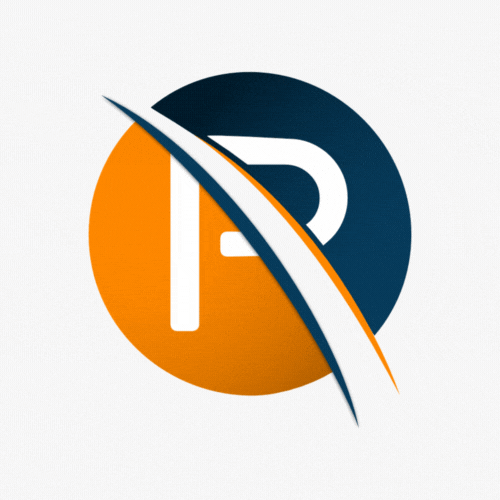A new payroll implementation is like moving house. It usually doesn’t happen often, and when it does happen, it’s because the change will suit you better, be that change for the price, convenience, or benefits.
Let’s not underestimate how tricky moving home can be. Somehow even when you have organized all your items in their boxes and systematically unpacked them on the other side, if you manage to get that right, you still end up losing your left slipper or some other arbitrary item that you use for a specific purpose. Of course, after that, a search ensues but turns out pointless as you utter,’ Oh well, it’s lost, let’s leave it and move on in life”.
I would have to say from experience that I have come to dislike moving from the losses and struggles I’ve encountered. And I know many others feel the same way about payroll implementations. Thankfully, I am here to share with you everything you need to know about payroll implementation so that you can be ready for your next move.
Selecting a Payroll provider
Naturally, the first thing you need is someone to move to. And yes, it is essential whom you go with because you will trust these individuals to move all your sensitive data and set it up with top-class compliance.
Payroll Implementation Process
No move is the same, yet the principle of moving remains. A great move’s success goes in hand with great planning. Planning involves thinking through your current and future steps to ensure you reach your goal in the best way.
So when you enter into an agreement with a payroll service provider to guarantee you have the best payroll implementation, there will be a few steps that you need to go through:
- Introduction Meeting
- Needs Analysis
- Migration
- Financial Take-On
- Parallel Runs
- Live Runs

INTRODUCTION MEETING
Have an introduction meeting with all the principal members involved and consolidate an outline of the planning process to follow. In the meeting, you will cover the following topics:
- Establishing timelines
- Expectations
- Delivery date
- Stakeholders
- Responsibilities

Need a Needs Analysis?
NEEDS ANALYSIS
Hold a needs analysis meeting to understand the specifications for the payroll. In this meeting, you will:
1. Have all relevant members attend who are related to payroll processes and HR.
2. Investigate company needs
a. Frequencies and pay dates
b. Headcount
c. Positional hierarchy overview
d. Cost centers
e. Company needs
f. Special needs
3. Make a list of reports required
4. Required batches to ease processing
5. Collect third-party vendor information
During this planning phase, be sure that you understand the move. It can be a saving grace to get familiar with the process by defining your How, What, When, Where, and Why.
Not every payroll provider is generous with the follow-up communication, which summarises your meeting and its outcome.
Also, this may be when you receive a revised quote and SLA if you were not required to sign it before the Needs Analysis.

PAYROLL MIGRATION
All the planning is done, and it’s time to get the job done! The payroll migration is usually the most lengthy and resource-dependent part of the move, especially if you are a medium to large business. A payroll migration is about detail and accuracy; if you focus on speedy implementation, you will likely be disappointed.
Instead, change your focus and shift your energy to ensure you provide the best data quality you can to the payroll implementation team. Ask questions about the next steps so that you and your team can have data ready in advance.
No implementation is the same, but you can get a good idea of the effort needed for a payroll migration when you understand the implementation timelines and required migration data.
Need a Quote?
Implementation Timeline
Payroll implementations can range from a few days to a year. Like moving house, a payroll implementation is incredibly dependent on how things are moved (e.g. the tools used to speed up the process), how skilled the movers are, and the number of movers dedicated to the job.
The central time-influencing factor is the complexity of your payroll.
Migration Data
Migration can come with many challenges. First of all, you are moving data from one software to another. This data transfer often exposes flaws in your current setup and presents the challenges of your unique setup.
The following is a list of information commonly required:
- Company information and union (if applicable)
- Defined payroll frequencies (monthly, fortnightly, weekly)
- Headcount info (permanent, contract, learners, temp)
- All employee information for employees processed in your current tax year. Such as full name, address, ID, tax number, pay rate, banking details, etc. Full list here-
- Payslip components and calculations for all employees (allowances, company contributions, deductions, fringe benefits, and notes)
- Leave setup and leave balances.
Not as common
- Organization hierarchy (Company, Departments, Branches, etc.)
- Cost center setup
- Positional info (Positions of Employees, Reports to people for leave and claims, operating department)
- Medical aid providers and dependants info
- Pension and provident info
- Terminations in the tax year
- ETI take-on
- Lump-sum directive

Financial Take-On
One of the most critical parts of moving is ensuring that the right furniture ends up in the right room. Similarly, it is essential that the right totals reflect on the right employee payslips. The financial take-on aims for employees to have one Tax certificate for the year and a history of financial totals in the new system.
There are two methods of financial take-on.
- Month to month – importing financial data one month at a time for the desired period.
- Year to date – A year of financial data will be imported into one month to reflect the full-year’s totals.
Both methods are correct, it depends on your need.

Parallel Runs
Now it is all hands on deck to move the last of your boxes to your new place.
In this phase, we run both the old and the new software on the same pay run. We compare the calculations and make sure the amounts pull through correctly.
This includes the following steps:
- Importing batches
- Printing payslips
- Comparing reports
- Exporting and testing bank files
When both the old and the new software’s data match, we can start live runs!
Live Runs
This is the day we have been preparing for. Your first night in the new house. All the data is in the new system the calculations are running correctly. We make payments from the new system for the first time.
Conclusion
Congratulations! You’ve now got the boxes and duct tape.
Now it’s time for the move! If you need some professionals to do the heavy lifting and handle your payroll with care and attention to detail, give us a call.
P.S. We also help people find new homes, so if you’re still exploring software options, we can take you through a few demos suited to your company’s specific payroll needs.


